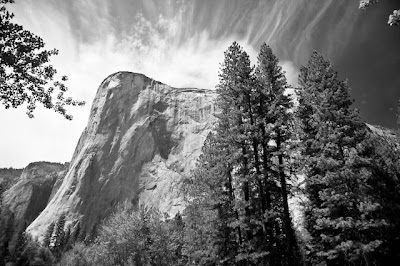
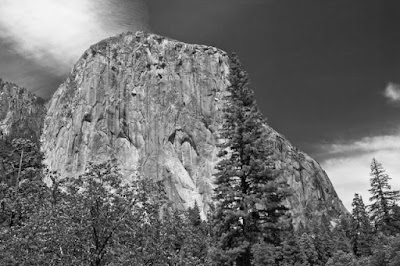
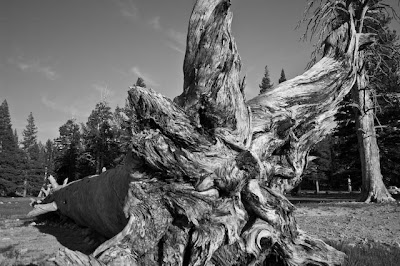
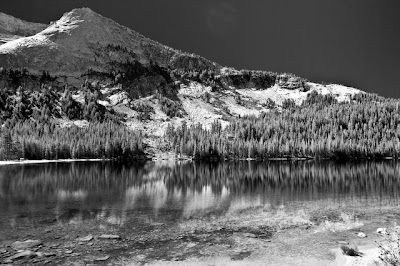
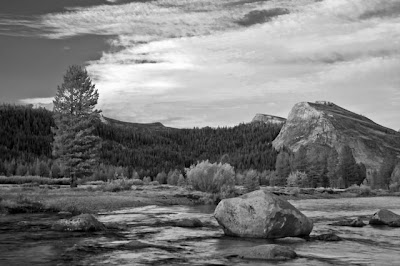
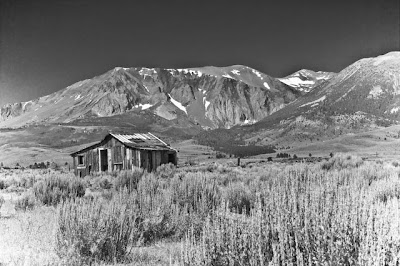
This is a follow up to my previous post of last week on Yosemite. Digital Photography has certainly made our photographic endeavors a lot easier than when Ansel Adams was alive. I thought so until I decided to turn some of my Yosemite photographs to Black and White.
Yes, Ansel Adams had to carry tons of equipment, large format folding cameras and film sheets. Then he had to spend hours or even days in the darkroom developing the film sheets, printing the images, correcting his results with dodging and burning techniques until he achieved what he called his visualization. There are no doubts that he made landscape photography known to the world. He knew his equipment, knew all the techniques of the era, and even devised the “Zone System”. He was a photographic genius.
However, he did not have to deal with color and especially color accuracy. That makes a huge difference. Even with digital, it is difficult to control colors. Too much saturation and the colors are unrealistic. White balance correction does not always render the accurate vision you had in your “mind’s eye”. The dynamic range with color photographs is very difficult to perfect, etc, etc.
I took some of the color pictures taken in Yosemite last week and turned them to Black and White with Adobe Lightroom. I find that it is easier to make the photograph “pop-out” in Black and White with simple manipulation. In Lightroom, (and certainly with other post-processing software) you can change the color images to grayscale, and of course make all the normal adjustments like exposure, clarity, brightness, contrast, the tone curve, etc. The interesting thing about Lightroom tools is that you can use the grayscale mix, which allows you to modify the Black and White picture by applying color filters just as you would have done with Black and White films. That changes the look of the photographs drastically and, in my opinion and just my opinion, allows you to make your photographs pop-out. There are no difficulties in color balance as all you have to deal with is Black and White.
So is it really easier to produce quality color digital photographs than it was to produce Black and White picture in Adams’ time?
I'm no Ansel Adams, but I do the best I can.
Thank you for reading,
Yvon Bourque

No comments:
Post a Comment